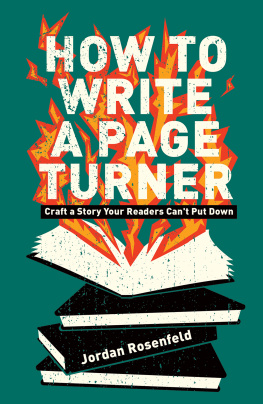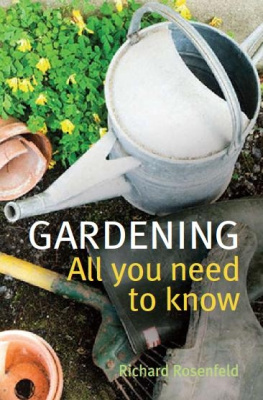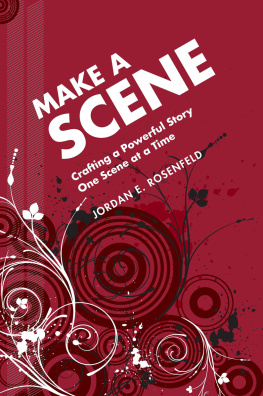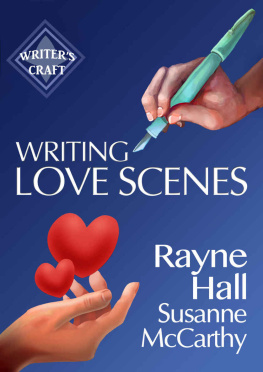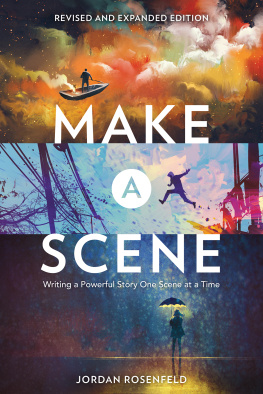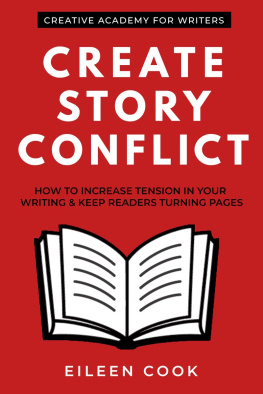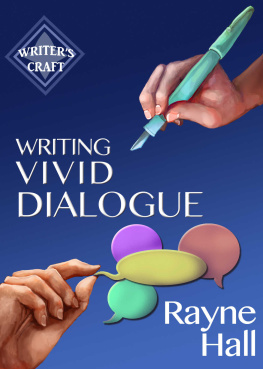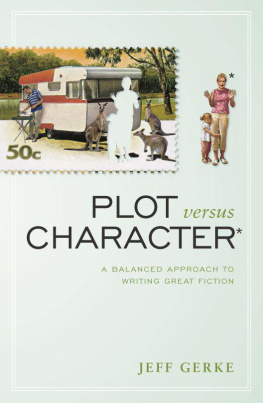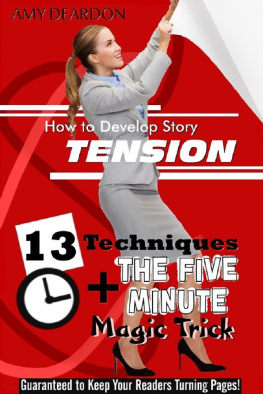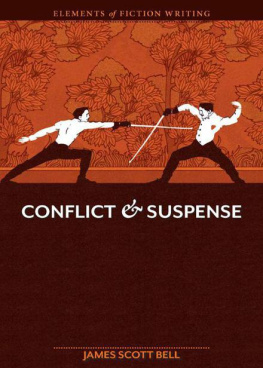Contents
Guide
HOW TO WRITE A PAGE TURNER
Craft a Story Your Readers Can't Put Down
Jordan Rosenfeld

WritersDigest. com
Cincinnati, Ohio
DEDICATION
To the many authors of page-turning books who taught me everything I know about good storytelling.
TABLE OF CONTENTS
INTRODUCTION
How to Write a Page Turner
Crafting a Story Your Readers Cant Put Down
Between the very sentences of page-turning stories thrums an element that pulls you on beneath your notice, beckoning you forward with an outstretched finger, your heart beating in anticipation all the while. Without this element, even the most well-crafted characters and compelling plots would fall flat. What is this mysterious element? In a word: tension. Page-turning stories thrive on this element of the craft like lungs do air.
Tension in novels, stories, and even memoirs is like the connective tissue that allows muscles to attach to bones, and thus flex their might. Its the heart of conflict, the backbone of uncertainty, the hallmark of danger. It keeps readers guessing, and characters on their toes. When its working, stories leave readers breathless and wanting more. When its missing, scenes feel inconsequential, the plot drags, characters meander.
How to Write a Page Turner pulls apart the cloth of story to reveal all the threads of tension sewn beneath the surface. Threads like danger, conflict, uncertainty, and withholding, all of which are necessary to help you craft a taut and exciting story that will earn you loyal and invested readers. The craft of writing can sometimes feel similar to a paint-by-numbers approachconnect compelling character A to plot event B. To avoid writing thats formulaic, predictable, and slow, this book will help you sew the threads of tension tight for an unforgettable story.
While this book walks you through the obvious elements that need tension buildingcharacter, plot, etc.it also delves deeper, to the subterranean places in a story where tension is often lacking. These places include the inner conflicts of a characters deepest psyche, the breath that beats between the very words you write, and the mechanics of how you reveal information to the reader.
But what about suspense, you might ask? How is that different from tension? Suspensethat feeling that you dont know whats going to happen next but you know its probably going to be bad, painful, hard, or scary, or possibly goodis a form of tension, but its only one kind of tension. The term suspense can be misleading and make writers believe that they have to write every scene in the style of a suspense novel. So I prefer tension for its versatility, and because tension has to exist at every level of your writing, but not always in the form of suspense.
SCENE VERSUS PLOT
Youll see that I often break the craft down into scene level and plot level suggestions. To clarify what I mean, heres a brief overview of how I define both scene and plot.
In my book Make a Scene: Writing a Powerful Story One Scene at a Time (Revised and Expanded), I write:
Scenes are the essential DNA of story: individual units, in which sympathetic characters undertake significant actions in a vivid and memorable way on the journey toward a compelling plot goal. When strung together, individual scenes add up to build plots and storylines.
The recipe for a scene includes the following basic ingredients:
- Protagonist: The main character, with goals, who is complex and nuanced, and who undergoes change throughout your narrative, demonstrated in words and deeds
- Antagonist and Allies: The characters who support and thwart your protagonist
- A Point of View: The lens through which the scenes are seen (either a limited, internal point of view [POV], or some form of omniscient POV)
- Momentum: Beat-by-beat action that allows the story to feel as if it is unfolding in real time
- New Plot Information: Events, discussions, discoveries, epiphanies, etc. that advance your story and deepen characters, usually as consequences of prior scenes, so that scenes weave together
- Tension: Conflict, suspense, and drama that test your characters and ultimately reveal their personalities, and line-by-line intensity that keeps readers reading
- Setting and Time Period: A rich physical setting that calls on all the senses and enables the reader to see and enter into the world youve created
- Thematic Imagery: Also called sensory imagery, these are details evoking the five senses (visual analogies and metaphors that are often symbolic) used to reveal themes, emotion, and subtext
- Narrative Summary: A spare amount of narrative summary or exposition, telling language that cuts to the chase when needed
Arguably, the one thing in that list that makes a scene a scene is momentumevents happening and people acting out behaviors in a simulation of real timebut well-balanced scenes include a little bit of everything. Mixing those ingredients together in varying amounts will yield drama, emotion, passion, power, and energy; in short, a page-turner.
Plot, then, as Martha Alderson and I write in our book Writing Deep Scenes: Plotting Your Story Through Action, Emotion, and Theme is as follows:
In all stories, to one degree or another, plot is how the dramatic events (action) in a story change and/or transform the main character (emotion) over time in a meaningful way (theme). The degree of character change or transformation can vary dramatically depending on the genre.
Plots unfold at the scene levelthat is, all the words and deeds by which characters demonstrate, discover, uncover, explore, interact, experience, and more happens in the beat-by-beat moments of a scene. But scenes add up to equal plots. Well talk more about this in Part Three: Plot Tension.
When youre done with this book, you should be able to identify the threads of tension at every level of your story, and use them to keep your readers tripping madly toward the end of your story.
TENSION AND GENRE
Another important distinction to make early on is that the types of tension you use will vary depending upon the kind of genre youre writing in. Youll see numerous examples of different genres of fiction throughout this book that will hopefully give you a sense of the varying scope of tension, but keep in mind a few things:
Genres like thrillers and suspense, which rely upon taut action and steady forward momentum more than deep, internal character conflict drama, will not focus so much on emotional tension as other genres such as romance, fantasy, or science fiction, or especially literary fiction. Similarly, character flaws may play a greater or lesser part in your story depending on its genre. Overall, however, I guarantee theres at least one, if not multiple areas of tension you can intensify in your work.
Writing that lacks tension tends to feel dull, monotonous, repetitive, implausible, overly summarized, or too easy. Look for the places where your story feels flat and where reader feedback suggests boredom or lack of depth. Those are your cues to infuse the story with the powerful tug of tension.
So, lets begin!
PART ONE
ESSENTIAL TENSION ELEMENTS
As you read each section of this book, it will help if you remember one important truth about storytelling: A good story is a

